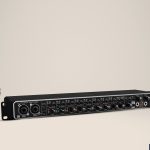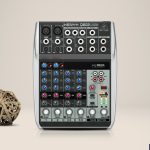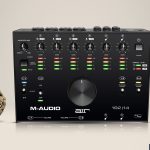
The 3.5mm Audio jack came out in the 1950s and it is widely in use even to this day. I love how versatile and nice it is.
Imagine this, you can use a device from the 1950s, that works with an audio jack and use them with a smartphone from 2022.
While audio jack 3.5mm can be found in most audio devices, modern technology is trying to ditch it.
The “Death” of the 3.5mm Headphone Jacks on Smartphones

Hate it or love it, this was a smart move from Apple. Their painful-priced AirPods were becoming more and more popular. The debut of the iPhone 7 also rose the sales of the AirPods, since you needed a pair of wireless headsets because there was no longer a 3.5mm Audio Jack.
Samsung would eventually join the “no jack” movement with its Galaxy Note 10 in 2019. The two big dogs or say main players in the smartphone industry, being on board sealed the death of the Audio Jack 3.5mm on smartphones.
As I am writing this article in 2022, you will be hard-pressed to find a flagship that has an audio jack, they are slowly disappearing.
What’s more, the low-end phones are starting to do the same. This is something many of us have been afraid of, we all know the value of the audio jack.
The deathblow should come when headsets are cheap, yet will offer great battery life and sound quality. Thankfully, they are still expensive and people prefer to be wired for now.
Why Most New Phones are Ditching the Headphone Jack
The major reason why smartphones are leaving the jack behind would be:
No, it’s not Airpods, those are just a bunch of conspiracy theories people came up with.
Jokes aside, the headphone jack takes up quite a lot of space in a device where being as thin as possible means Modernity, High-End. The headphone jack limits many aspects while doing only one thing. It was a smart sacrifice from the manufacturers.
Apart from giving the device freedom and thinness, leaving the jack behind makes it easier for devices to become waterproof. Also in a way, it feels like the Audio Jack 3.5mm is passing its audio duties to the USB-C port, and we all are aware of how good the USB-C port is.
Even though the demise of the headphone jack is certainly a bad thing from the consumer point of view. The known brands are trying hard to prove to us that, they did it for good, and being “Wireless” is the way to enter the new age/modern world.
Bluetooth Headphones
The announcement of the Bluetooth audio device pretty much contributed to the demise of the humble headphone jack, as well.
Bluetooth headphones are something that works via Bluetooth connection, meaning that they won’t have to be plugged somewhere to stream music, unlike their counterparts wired headphones.
With the release of modern wireless headphones, even speed up the process of headphone jack disappearing.
You might wonder why, well wireless earbuds and headsets come with cutting edge mobile technology that set them far apart from wired headphones. You find things like bass boost, ANC, and so on.
The only time you use wires on wireless headsets is to charge them up due to the wired charging system. You do that via the bluetooth audio adapter.
Final “Grief”
And in the end, to wrap it up, all I can say is that it has its benefits and drawbacks – we will see how things play out in the future.
Even if you love your iPhone 6, I wouldn’t recommend holding to it. No matter how much we loved our “dear friend”, the headphone jack – it wants us to move forward and adapt to changes.
Further Reading
Since we talked about connectors, such as aux cables, you wouldn’t mind reading something more about Focusrite and PreSonus Audio Interface
Furthermore, you can read about the best studio monitors, and you can find out what size studio monitor you need.
The JBL Charge 3 vs JBL Charge 4, is an excellent comparison, for instance. A list of top studio monitor cables is also included.
Another would be to determine whether you need an audio interface for studio monitors.
Mix & Mastering
I love to get my hands on all sorts of audio equipment, from headphones and speakers to audio interfaces. I love putting these products through their paces and seeing what they can do.





